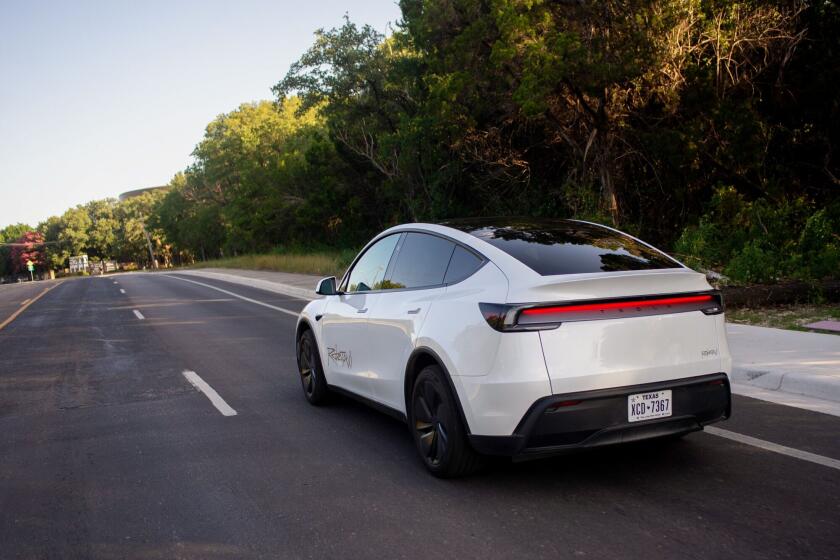Spanning generations
- Share via
In the aftermath of the Minnesota bridge disaster, U.S. Transportation Secretary Mary Peters told authorities in every state to inspect bridges constructed with the same kind of steel truss engineering. That’s both good news and bad.
The good is obvious. If a characteristic of the span that collapsed into the Mississippi River allowed imminent failure to go undetected, it is prudent to make sure the same thing isn’t about to happen to thousands of bridges across the country. The bad is only slightly less obvious. It shouldn’t take the horror of cars plunging into a river or being crushed between layers of concrete to alarm officials and the public about aging or inadequate infrastructure. In California, we live with the knowledge that steel and concrete can fail when the ground moves violently, but the bridge in Minnesota is a reminder that engineered marvels can crumble even without earthquakes.
It is tempting to see roads and bridges as free gifts from previous generations. They paid for and built interstate highways, just as their forebears built railroads, canals and dams. We inherited and enjoy the benefits of those structures, and it’s our turn to build something new and even more sophisticated, like wireless networks and maglev trains. And if elected officials are going to spend money on a bridge or a freeway, they would rather do it on something new -- something that can be named after them, or at least credited to them. Everyone wants to be a builder. Who wants to be a maintenance worker?
But it doesn’t really work that way. Bridges, especially, are never completed. They must be constantly maintained and often rebuilt -- especially when they are forced to bear increasing traffic loads unimagined by the designers who drew up their plans half a century ago, during the great era of automobile-related construction. That means the current generation must pay for the privilege of using what the last generation built.
California has long made transportation spending a top priority, but budget demands often siphon funding into other projects. The portion of La Cienega Boulevard that passes over Ballona Creek worries engineers. Seismic upgrading is required for more than 50 bridges in Los Angeles County. The federal government has labeled nearly 3,000 bridges across the state “structurally deficient” -- the same category assigned to the Minnesota bridge that fell this week.
Americans must pay for their old bridges as well as their new ones -- either now, to keep them in good repair, or later, when they fail.
More to Read
Sign up for Essential California
The most important California stories and recommendations in your inbox every morning.
You may occasionally receive promotional content from the Los Angeles Times.













